Pets and new relationships

Studies suggest that one of the best ways to find a partner is to take your dog out for a walk in a local park. Yet, unfortunately, this can sometimes be the easy part! When people with pets start living together, it is not just their own feelings that are significant.
Those of their pets are also likely to have to be considered as well. There are certainly no guarantees that the animals will choose to live together in harmony, but careful planning should help to reduce the risk of problems arising.
Plan ahead
The likelihood of disagreements between two sets of pets will be lessened if they are both moved to a new home at the same time. Here there will no existing territorial boundaries in place, allowing both pets to settle down alongside each other.
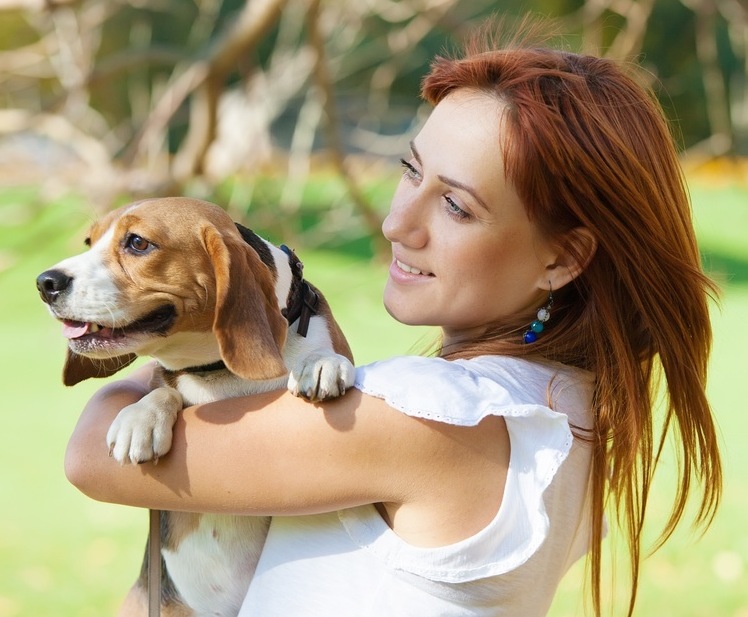
Beagle and ownerBringing a new dog into a home alongside an established pet can be much more fraught. Some breeds, such as Staffordshire bull terriers, do not appreciate the company of other dogs at the best of times, let alone having a potential rival invade their living space. It should be easier with breeds which are naturally social, such as most hounds, like the basset hound or the beagle, as seen here.
If possible, try to introduce the dogs on neutral territory as far as possible, before they are expected to live together. Taking them out for walks is a good way for the dogs to become acquainted. Young puppies are often more tolerant of others of their kind than older animals, as are those which are neutered.
Risk factors
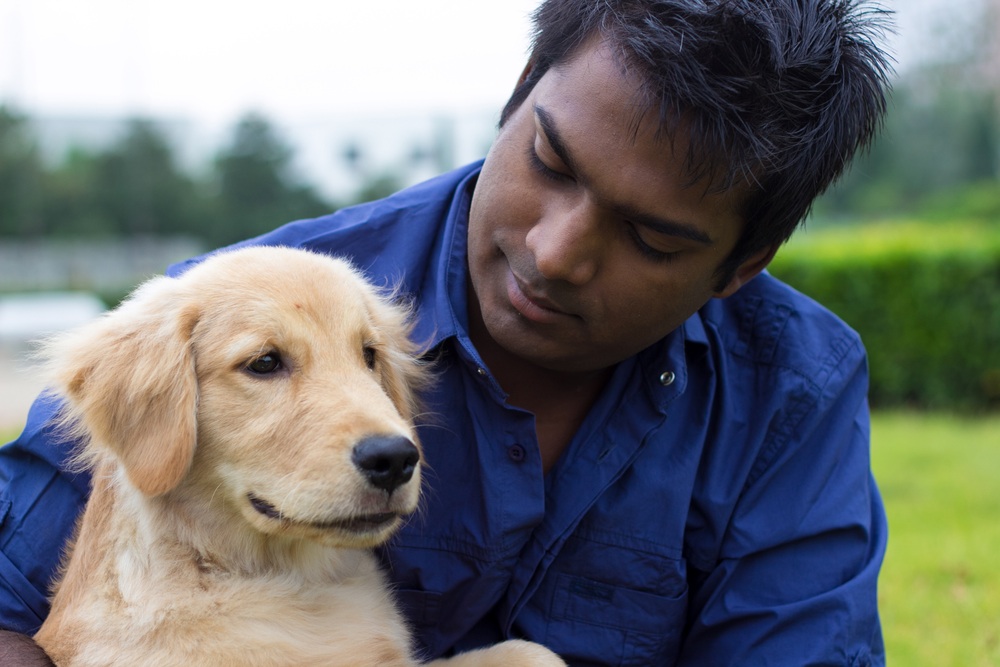
Owner and young dogEven so, there are several likely flashpoints in the home which need to be considered. These revolve mainly around feeding and sleeping arrangements. It is a good idea to exercise the dogs late in the day, so that hopefully, they will be tired by the time that they arrive home, and will settle down to sleep, rather than being likely to squabble.
If the dogs are used to sleeping in their own baskets or on bean bags, then space these out in the room, rather than putting them side by side. With space between them, there is likely to be less risk of territorial disputes arising. At night, arrange things so the dogs sleep in separate parts of your home.
Feeding time is the the most common stage for serious disputes to arise, and the dogs should always be fed separately. Otherwise, if one finishes its meal before the other, it may try to steal food from its companion, leading to aggressive behaviour. Another advantage of feeding the dogs on their own is that you can keep a check on their individual appetites.
v New lessons
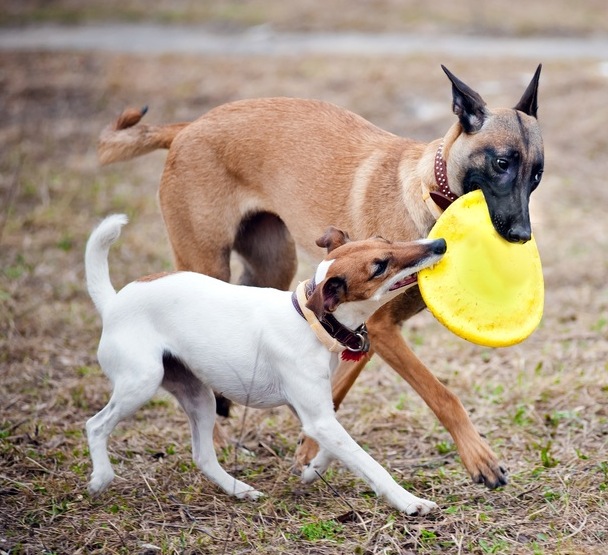
Two dogs with toyToys can also be an occasional cause of disputes between dogs, especially if you are playing with one dog and the other then wants to join in the game. This needs to be gauged carefully, to prevent any fighting.
It is better, especially at first, to take them through combined training exercises, rather than chasing a ball. Encourage the dogs to sit and stay together. You can then start to establish a training pattern involving the dogs, expanding this so that one remains sitting for example, while the other comes to you when called.
v Once this basic joint training routine, which reinforces their individual training, is adequately mastered, you can then expand upon this into ball games. As a result, you should remain in control of the situation, without a real risk of the dogs fighting. This also gives time for the dogs to get to know each other better, lessening the risk of any dispute.
If it goes wrong
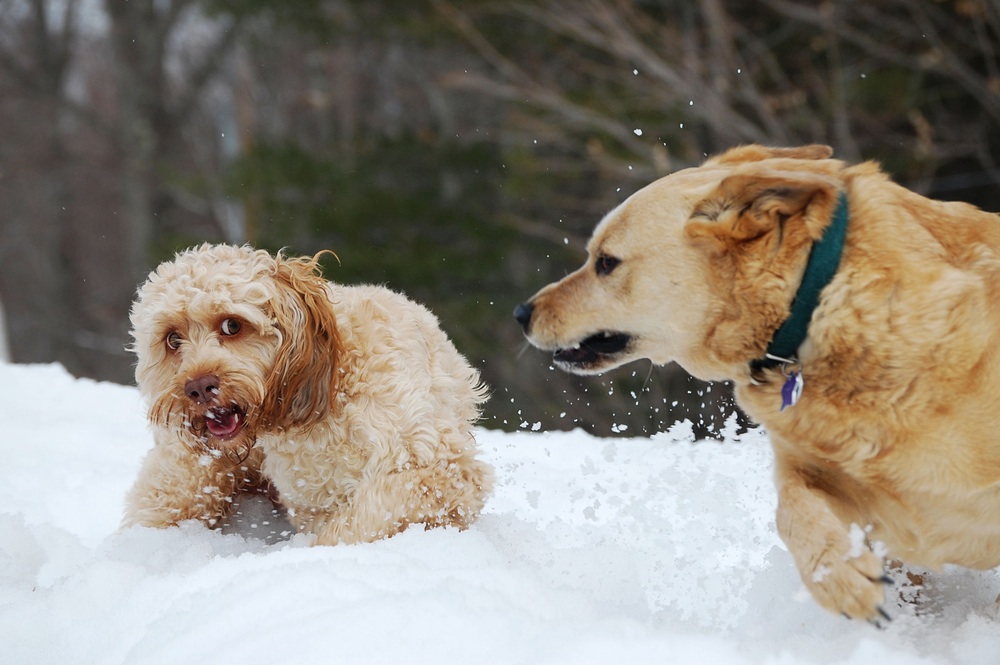
Dogs disagreeingShould the dogs decide to scrap at any time however, then the best way to separate them is to pull them apart, taking care not to be bitten in the process. Grip the collars of the both dogs firmly. Otherwise, if you simply drag one away, the other is likely to follow, increasing the likelihood of you being bitten as a result.
If they are not wearing collars, it will be much harder to separate them, unless you can lasso them with leads. Throwing a bucket of cold water may be a desperate but effective way of damping their enthusiasm for a fight under these circumstances.
Two dogs are potentially more likely to fight than two bitches. If there are persistent outbreaks of aggression, then having the dogs neutered should help to make them more compatible. The same applies in the case of cats, with an established tom being likely to fight particularly aggressively if a newcomer is introduced to its territory.
Cat pawing at dogYou also need to be cautious about introducing a dog to a cat for the first time. Dissuade your dog from chasing after the cat. In most cases, the pair will strike up a relationship, in which the cat is likely to be the dominant partner, even if it is smaller in size than its canine companion.
Behavioural changes
There may be other unpleasant indicators of disharmony between pets as well, when they are first introduced to the same household, particularly in the case of cats. It is harder to predict as to how they will react to each other though, compared with dogs. Sometimes, a pair of cats will settle very well after a period of adjustment, even to the extent of grooming each other regularly, whereas in other cases, they may simply ignore their companion.
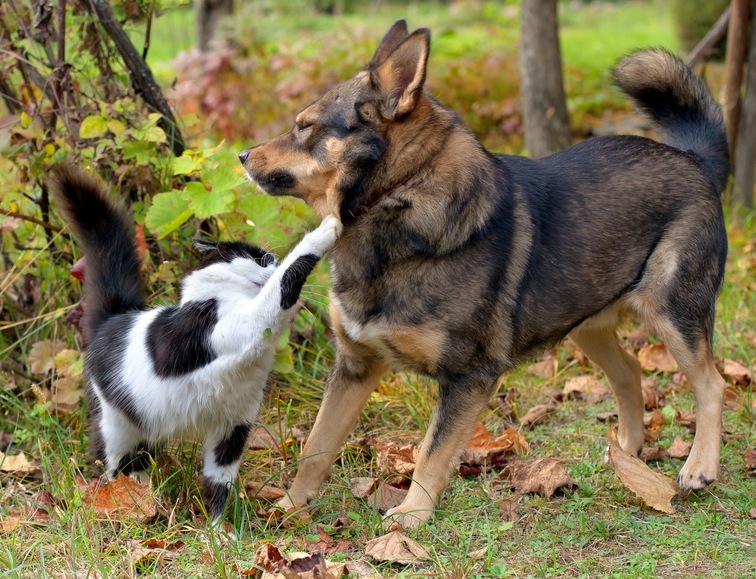
A breakdown in house-training is a common problem when another dog or cat is brought into the home. This occurs because instinctively, like their wild ancestors, these animals will scent-mark their territories with urine. The presence of a newcomer can therefore lead the established pet to resort to behaving in this way around the home, with table-legs, carpets and even bedrooms often being chosen for this purpose.
Owner with English cocker spaniel and ChihuahuaIt can be a difficult problem to overcome, but it should pass in time, once the newcomer's scent is also well-established in the home. You can obviously reduce the risk of soiling indoors as far as possible, in the short-term, by restricting your pets' access to most rooms.
A serious mistake to make
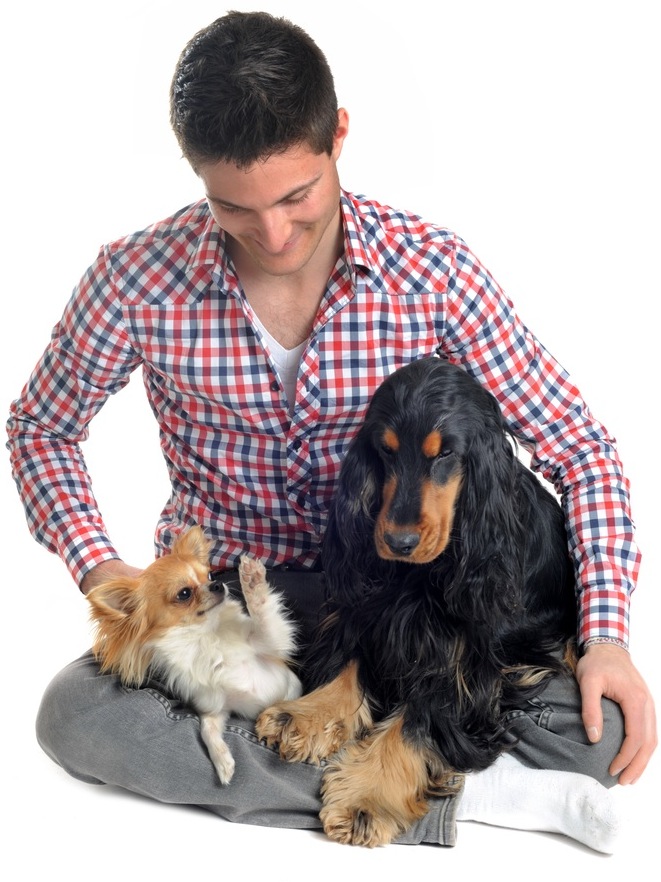
While there is a natural temptation to pay more attention to the newcomer, this is actually counterproductive, and likely to be a cause of problems. The established dog will feel that its dominant role is being weakened, leading to a greater risk of conflict.
The real answer is to reinforce the position of the established dog, giving it preference over its companion, so that both accept their respective positions. Dogs still retain strong pack instincts, and the subordinate is less likely to challenge the dominant dog under such circumstances.
It would also be a mistake to assume that the smaller individual is necessarily the subordinate individual. Some small dogs are much more feisty and determined than may be the case with larger companions that have a more laid-back approach to life.
Feathered friends
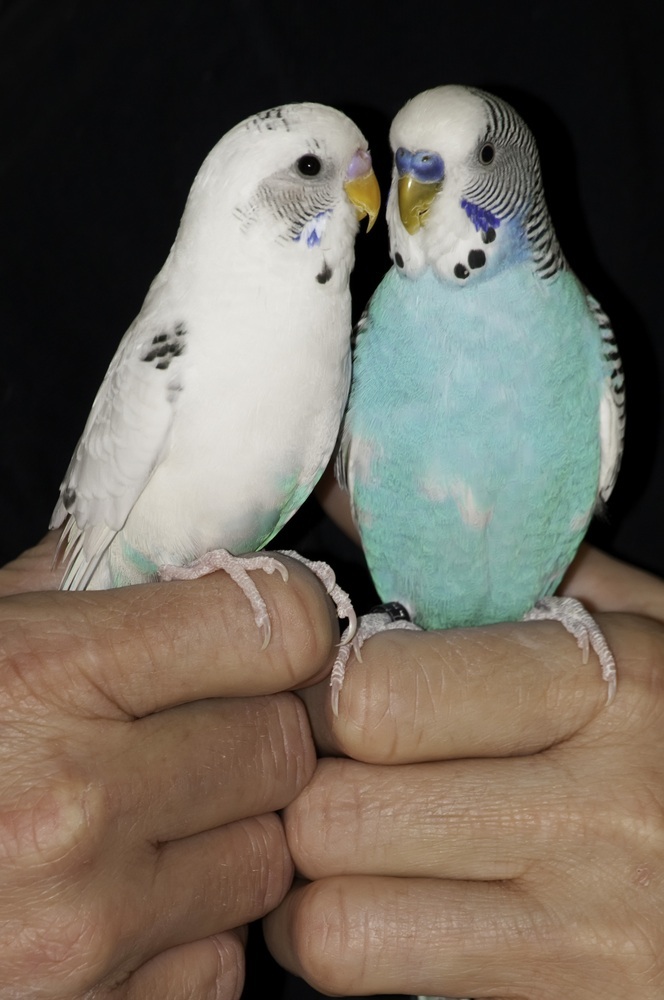
It is not just dogs or cats that can be a cause of worry in a new home. Some pet birds may also not agree well together. Parrots in particular can be prone to displays of jealousy. Never place two strange birds together therefore, although they can be kept in the same room. When you let them out, you should supervise them, in case of a fight. Cockatoos in particular can be highly aggressive.
Budgerigars tend to be far more tolerant than larger parrots, but again, the birds should be allowed to meet out of their cages at first. In due course, they will often decide to return together to one cage, and then they can be left together safely.
It can often be dangerous to allow one bird out into a room while the other is still housed in a cage. The bird which is flying around may well be attracted to its neighbour's quarters, and can end up with a badly bitten foot, having been nipped by the other bird through the bars.